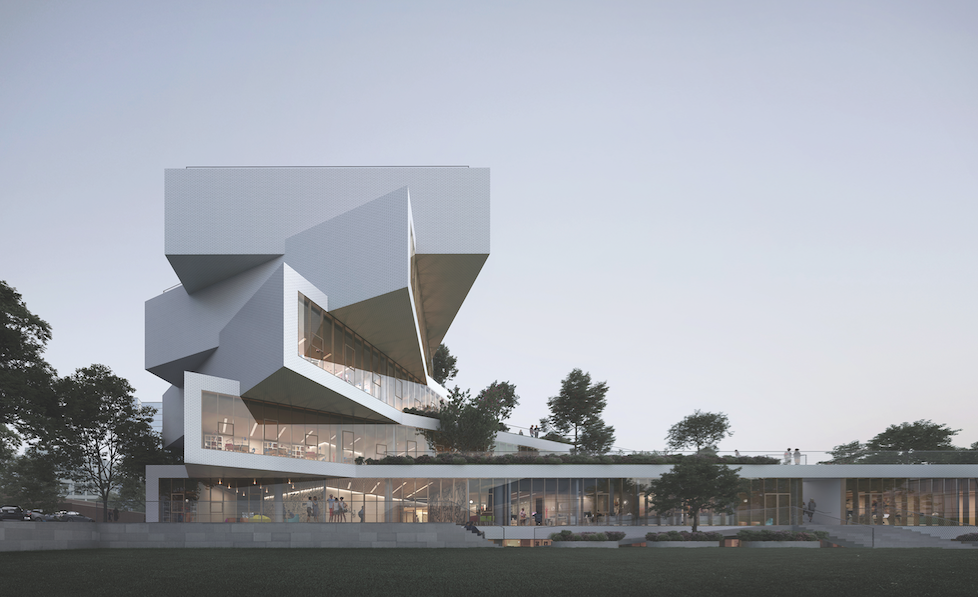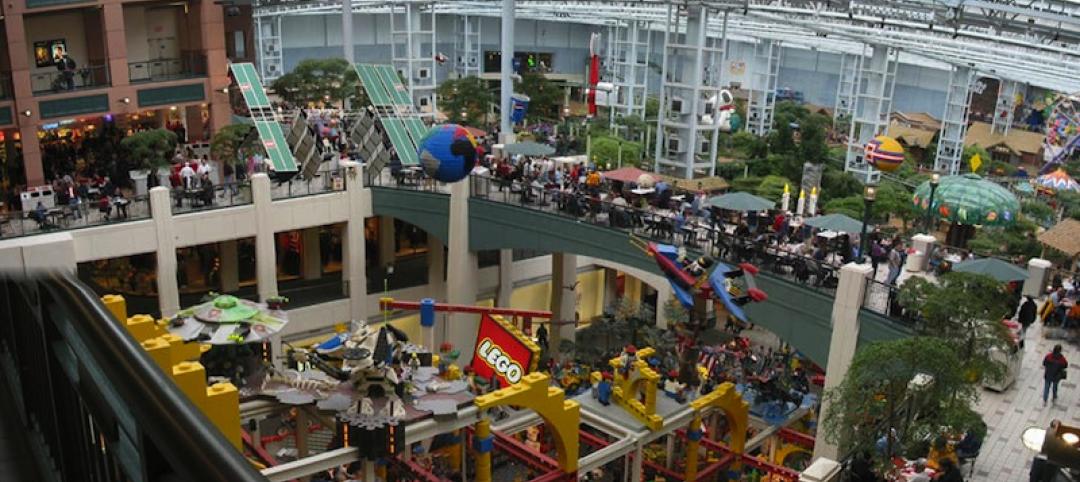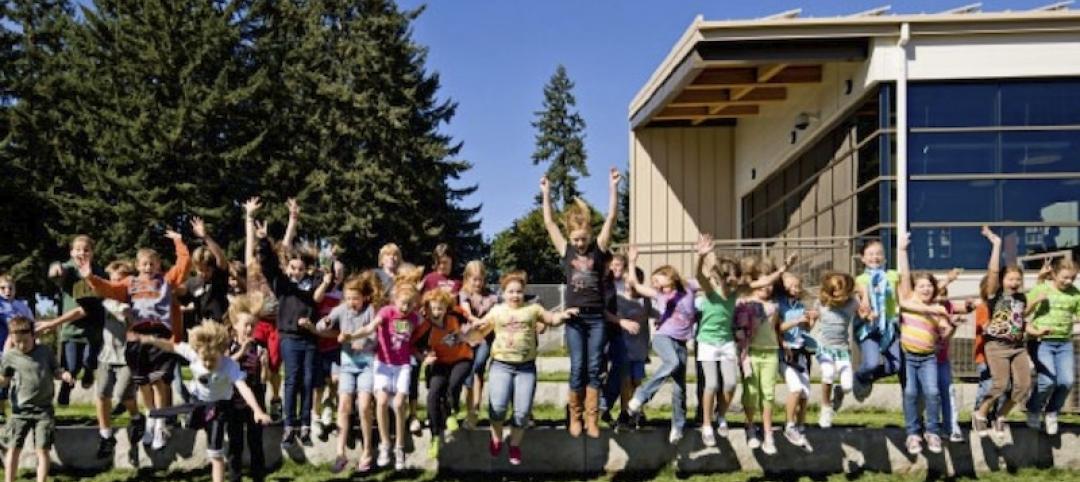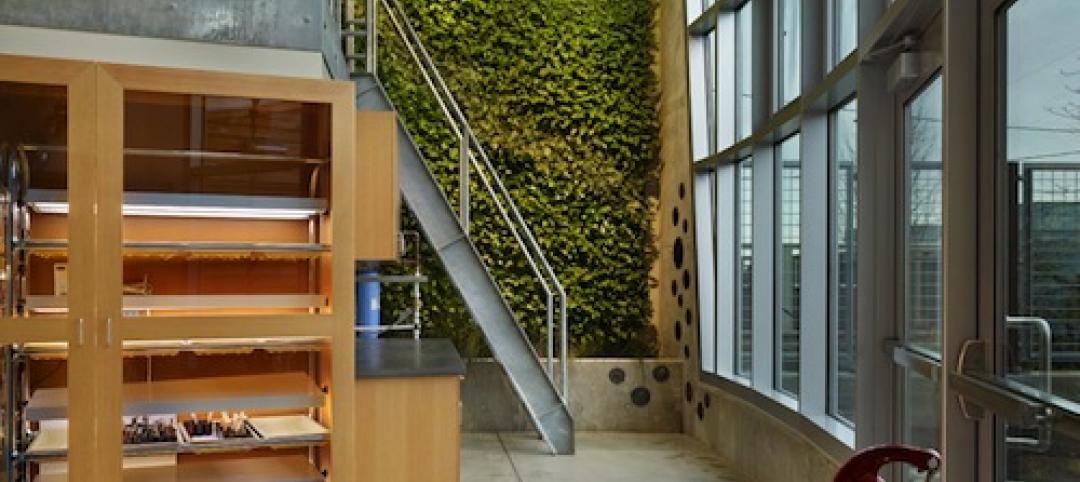Personalized learning tailored to the needs of individual students, coupled with group projects, is taking hold in the nation's schools. “We can’t just line up students in rows and teach everybody the same way, at the same pace,” says Leanne Meyer-Smith, AIA, LEED AP, VP of Architecture with Wight & Company. “That’s not working.”
In terms of school design, no single template has taken hold, but one thing is certain: long, double-loaded corridors are a thing of the past.
Improved economic conditions have freed up money for new projects and renovations. There’s a sense of urgency to update facilities to make up for the time lost when the Great Recession stymied many projects. “We’ve been seeing a lot more success with school funding referendums,” says Steve Herr, AIA, Director of Design, Fanning Howey.
See also: Top 150 K-12 Architecture + AE Firms - 2018 Giants 300 rankings
See also: Top 75 K-12 Engineering + EA Firms - 2018 Giants 300 rankings
See also: Top 90 K-12 Construction + CM Firms - 2018 Giants 300 rankings
Designing schools that can accommodate the pedagogy of today and the teaching styles of tomorrow is educated guesswork. “You have to allow for evolving instructional models without forcing tremendous expense to reconfigure spaces,” says Sean O’Donnell, FAIA, LEED AP, Principal and Practice Area Leader, Primary Education, with Perkins Eastman. Providing a little extra room and flexibility is crucial.
Extra space for learning and socializing can be created in common areas, where students can study and collaborate on projects in nooks and crannies around the school. “Interstitial spaces are really important,” says O’Donnell.
The building core at the Wilson School, a new 775-student high school under construction in Arlington, Va., will feature a wide staircase that opens out to the lobby, which will double as a gathering place for students. “We typically see that type of space in a university setting,” says Andrew Graham, AIA, Associate with Leo A Daly, the project’s design architect, along with Bjarke Ingels Group.
Even renovations of old double-loaded corridors can get at least part of the way to a modern design. Provided there's sufficient structural support in place, interior walls can be removed and track-mounted wall systems can be installed. “When you open up the walls, the corridor disappears and becomes a learning space,” says Lance Tritsch, LEED AP, Project Director, Pepper Construction.
Even when structural alterations are not possible, spaces can still be reconfigured at relatively low cost. “There’s a lot you can do with agile furniture,” says Meyer-Smith. Classrooms can be spruced up with new carpeting, plush pillows, and strategically placed bookshelves as dividers.
K-12 school designers are also using the increasing body of scientific evidence that links the interior environment to student performance as they pitch design ideas to district officials. Daylighting and indoor air quality are always on the front burner in these discussions.
Acoustic clarity within the classroom is also a major consideration. “If students can’t hear the teacher clearly, their ability to learn is impaired,” says Laura Wernick, FAIA, REFP, LEED AP, Senior Principal with HMFH Architects. Reducing noise is especially critical for children with ADHD, a condition exacerbated by excessive stimuli.
HMFH brings in experts at various stages of the project to measure and analyze classroom acoustics. This enables designers and contractors to identify noise problems early, before they get too expensive to fix, says Chin Lin, AIA, LEED AP, Senior Associate with HMFH.

Wilson School, Arlington, Va
Children with ADHD and other conditions that are made worse by excessive stimuli can benefit from the use of tunable LEDs, says Lin. “Dimming and providing warmer tones through lighting is calming,” he says. With color-tunable lighting currently costing about twice as much as standard lighting, schools are likely to use the more expensive options in special needs classrooms where they can do the most good.
The trend toward more hands-on learning remains strong. STEAM and STREAM (the “R” is for robotics) curricula often include maker spaces equipped with 3D printers. O’Donnell says “flight lounges"—areas adjacent to maker spaces, where teachers from different subject areas can get together to devise interdisciplinary teaching strategies and hands-on student projects—are coming into vogue.
getting students out into the world
High schools are also experimenting with giving students real-world business experience. The new Carmel (Ind.) High School has a 2,000-sf space for a student-run coffee shop and retail outlet featuring school-themed clothing and gear. Students perform all the managerial, accounting, marketing, graphics, and communication tasks to run the business. There's even a “Shark Tank,” where students can pitch ideas using whiteboards and high-end presentation tools.
A 30,000-sf space in a repurposed warehouse at the Brooklyn (N.Y.) Navy Yard is dedicated to the STEAM Center, where 11th and 12th graders from Brooklyn schools spend half of each day learning vocational and technical skills such as engineering, design, construction, film and media, and culinary arts.
“Students are introduced to companies in the Navy Yard and have the opportunity to participate in internships,” says Christine Schlendorf, AIA, Principal with Perkins Eastman.
Related Stories
| Jun 5, 2013
USGBC: Free LEED certification for projects in new markets
In an effort to accelerate sustainable development around the world, the U.S. Green Building Council is offering free LEED certification to the first projects to certify in the 112 countries where LEED has yet to take root.
| Jun 3, 2013
Construction spending inches upward in April
The U.S. Census Bureau of the Department of Commerce announced today that construction spending during April 2013 was estimated at a seasonally adjusted annual rate of $860.8 billion, 0.4 percent above the revised March estimate of $857.7 billion.
| May 21, 2013
7 tile trends for 2013: Touch-sensitive glazes, metallic tones among top styles
Tile of Spain consultant and ceramic tile expert Ryan Fasan presented his "What's Trending in Tile" roundup at the Coverings 2013 show in Atlanta earlier this month. Here's an overview of Fasan's emerging tile trends for 2013.
| May 20, 2013
Jones Lang LaSalle: All U.S. real estate sectors to post gains in 2013—even retail
With healthier job growth numbers and construction volumes at near-historic lows, real estate experts at Jones Lang LaSalle see a rosy year for U.S. commercial construction.
| Apr 30, 2013
Tips for designing with fire rated glass - AIA/CES course
Kate Steel of Steel Consulting Services offers tips and advice for choosing the correct code-compliant glazing product for every fire-rated application. This BD+C University class is worth 1.0 AIA LU/HSW.
| Apr 25, 2013
Colorado State University, DLR Group team to study 12 high-performance schools
DLR Group and the Institute for the Built Environment at Colorado State University have collaborated on a research project to evaluate the effect of green school design on occupants and long-term building performance.
| Apr 24, 2013
North Carolina bill would ban green rating systems that put state lumber industry at disadvantage
North Carolina lawmakers have introduced state legislation that would restrict the use of national green building rating programs, including LEED, on public projects.
| Apr 24, 2013
Los Angeles may add cool roofs to its building code
Los Angeles Mayor Antonio Villaraigosa wants cool roofs added to the city’s building code. He is also asking the Department of Water and Power (LADWP) to create incentives that make it financially attractive for homeowners to install cool roofs.
| Apr 22, 2013
Top 10 green building projects for 2013 [slideshow]
The AIA's Committee on the Environment selected its top ten examples of sustainable architecture and green design solutions that protect and enhance the environment.
| Apr 15, 2013
Seattle school certified as world's fourth Living Building
Bertschi School, an independent elementary school in the Capitol Hill neighborhood of Seattle, Wash., is now home to the first Living Building on the West Coast and the world’s fourth fully-certified Living Building.

















